Adaptative Capacity Wheel
Purpose of the tool
Institutional systems comprise laws, regulations, social rules and conventions that prescribe how people can behave and cooperate. Such rules can either inhibit or improve people's ability to adapt to climate change. The Adaptive Capacity Wheel (ACW) is used to diagnose strengths and weaknesses in institutional systems in the capacity to adapt to climate change. An overview of both strengths and weaknesses leads to a better understanding of the system of governance and enhances the discussion how it can be improved.
Target group: Governments, NGO's.
Tool description
For the ACW assessment documents and interviews are used. The ACW identifies six dimensions that are relevant for the adaptive capacity of a society, according to the literature on climate adaptation and governance. They are variety, learning capacity, room for autonomous change, leadership, availability of resources, and fair governance. These six dimensions are further divided in 22 criteria. For each criterion and dimension a score and a colour are chosen based on a qualitative assessment. The draft assessment can be reviewed by other researchers and involved stakeholders to arrive at more robust conclusions. The outcome is a starting point for further discussion on the design of the institutional system.
Result description
The results of the scores on 22 criteria and 6 dimensions are shown as a wheel to provide a fast intuitive overview. For each score a colour code is applied in a simple 'traffic light' scheme ranging from green to red.
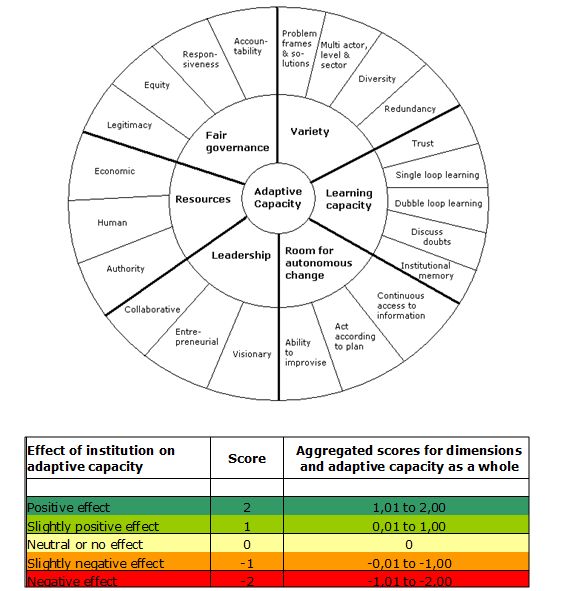
The tool in practice
The Adaptive Capacity Wheel has been applied to the Dutch regulative system, to South Korea and in several other cases. In the example shown below it was applied to compare two complex systems: the Dutch Wadden Sea and the Venice Lagoon. The physical and economic characteristics of the two regions proved to be quite similar, while the institutional system was very different. These two different governance systems, however, lead to a similarly low level of adaptive capacity. In the Wadden, decision processes are slowed down because of a lack of authority and leadership. On the dimension of learning, the Wadden case scores positively. In Venice, lack of cooperation and accountability limit learning. Venice scores well on the autonomous ability to change. In both cases there is much to be improved and the two regions can learn from each other. Venice could improve learning with arrangements similar to those in the Wadden, such as the Wadden Academy. The Wadden area could learn from Venice how to inform the larger public on potential flooding.
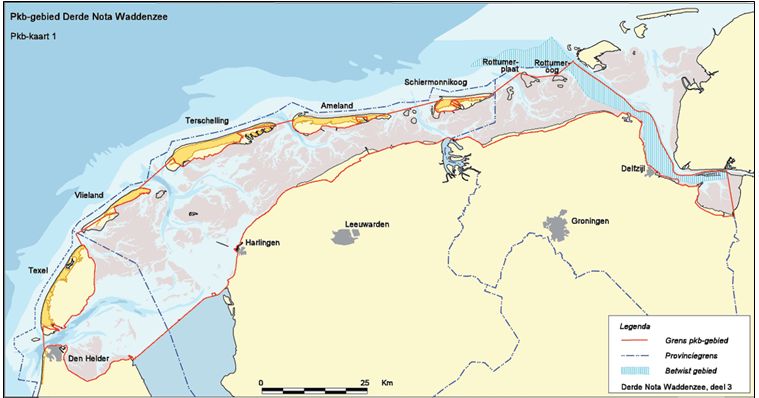
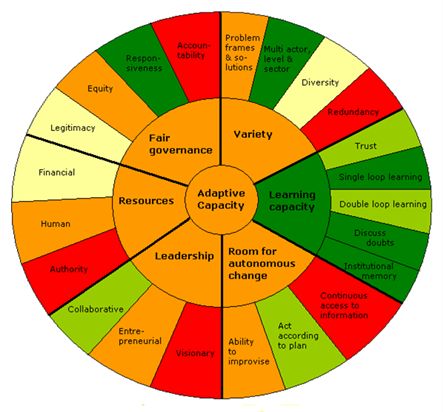
Results Wadden Area
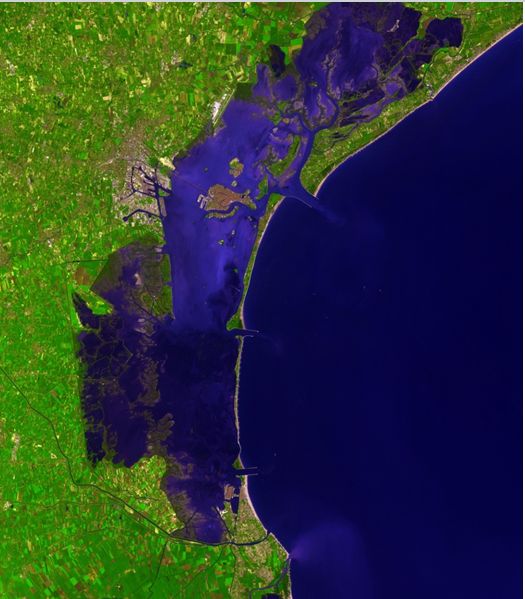
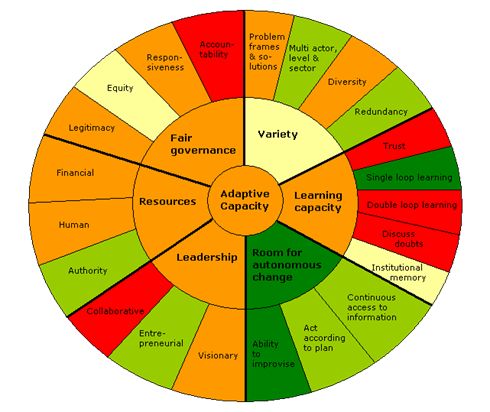
Results Venice Lagoon
Necessary inputs and conditions
The analysis can be based on formal documents such as laws and agreements. Interviews are required for an assessment of the informal rules. Preferably more than one researcher is involved and a validation workshop should be organized with the stakeholders.
Contact data
Institute: Wageningen UR
Judith Klostermann, Judith.klostermann(at)wur.nl, 00-31-317-486427
Katrien Termeer katrien.termeer@wur.nl
Institute: University of Amsterdam
Joyeeta Gupta, J.Gupta@uva.nl, +31 (0)20 525 9111
More information (Dutch).
Phase and tool category: Implementation & Evaluation and Monitoring | Governance
Spatial scale and time scale
Spatial scale: ranging from national to local
Time scale: a status update for institutions in case studies will take up to 3 months
Tool availability
The guideline is available free online in Dutch, via hired expertise the tool can be explained.
Downloads